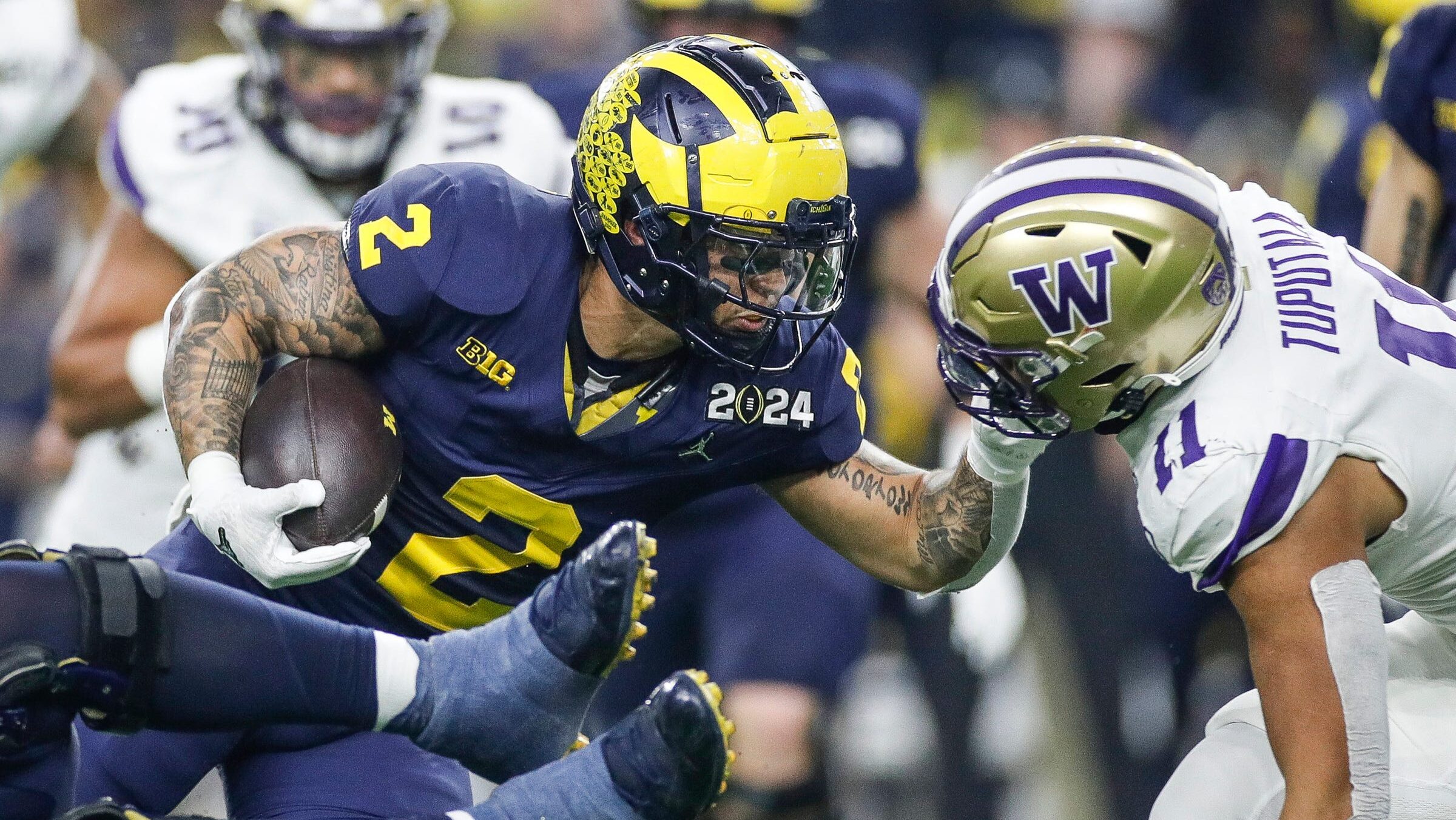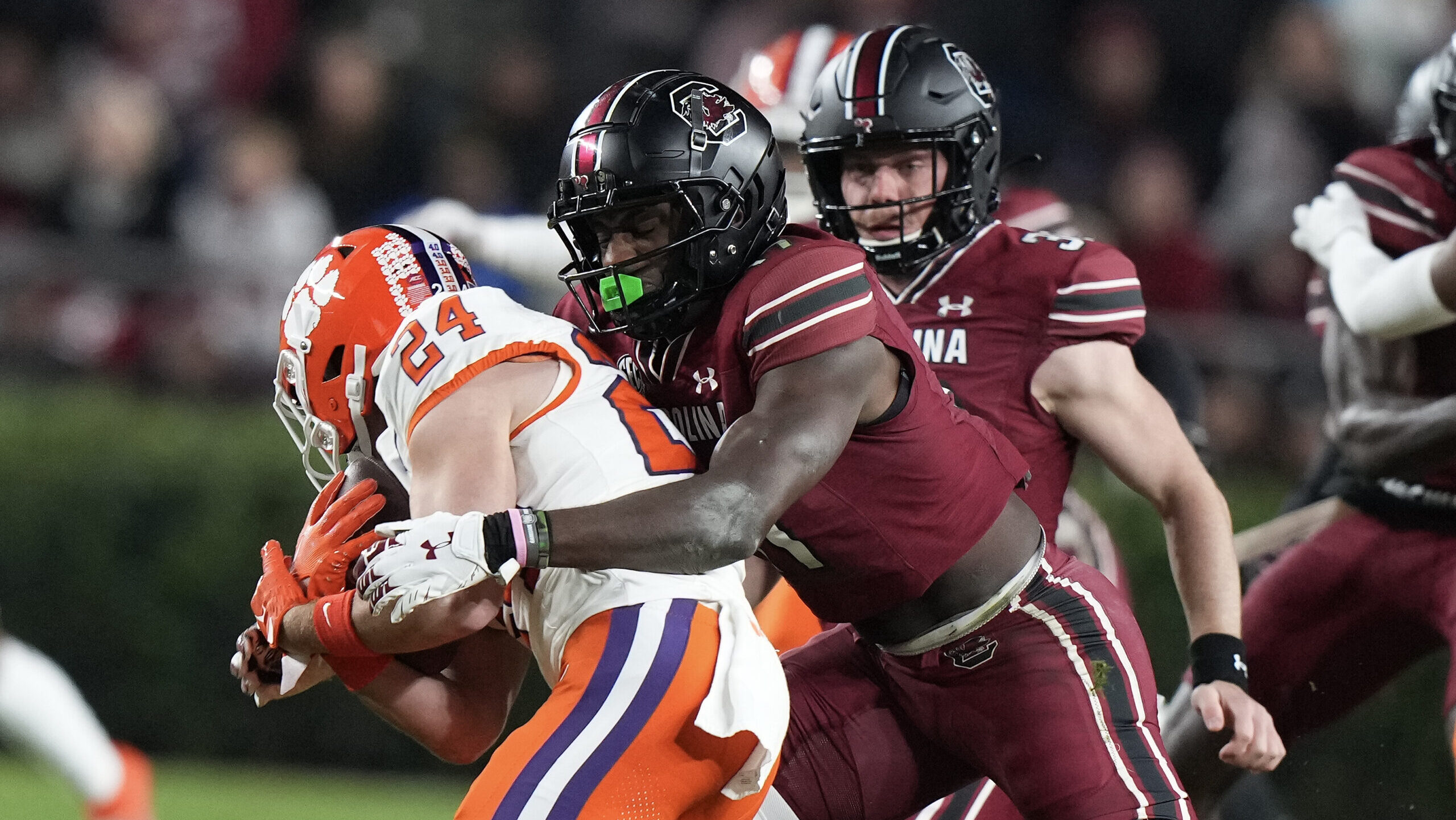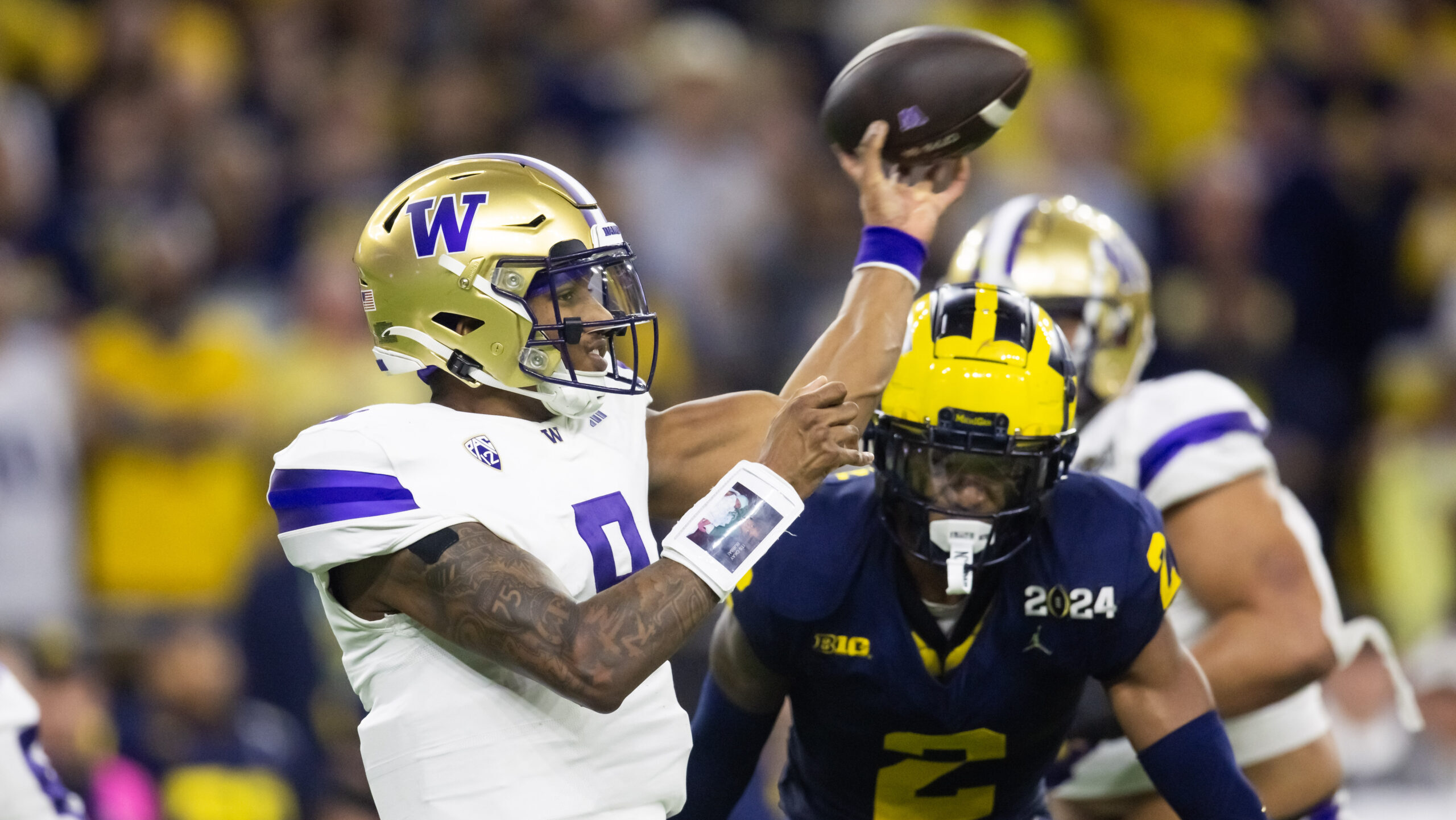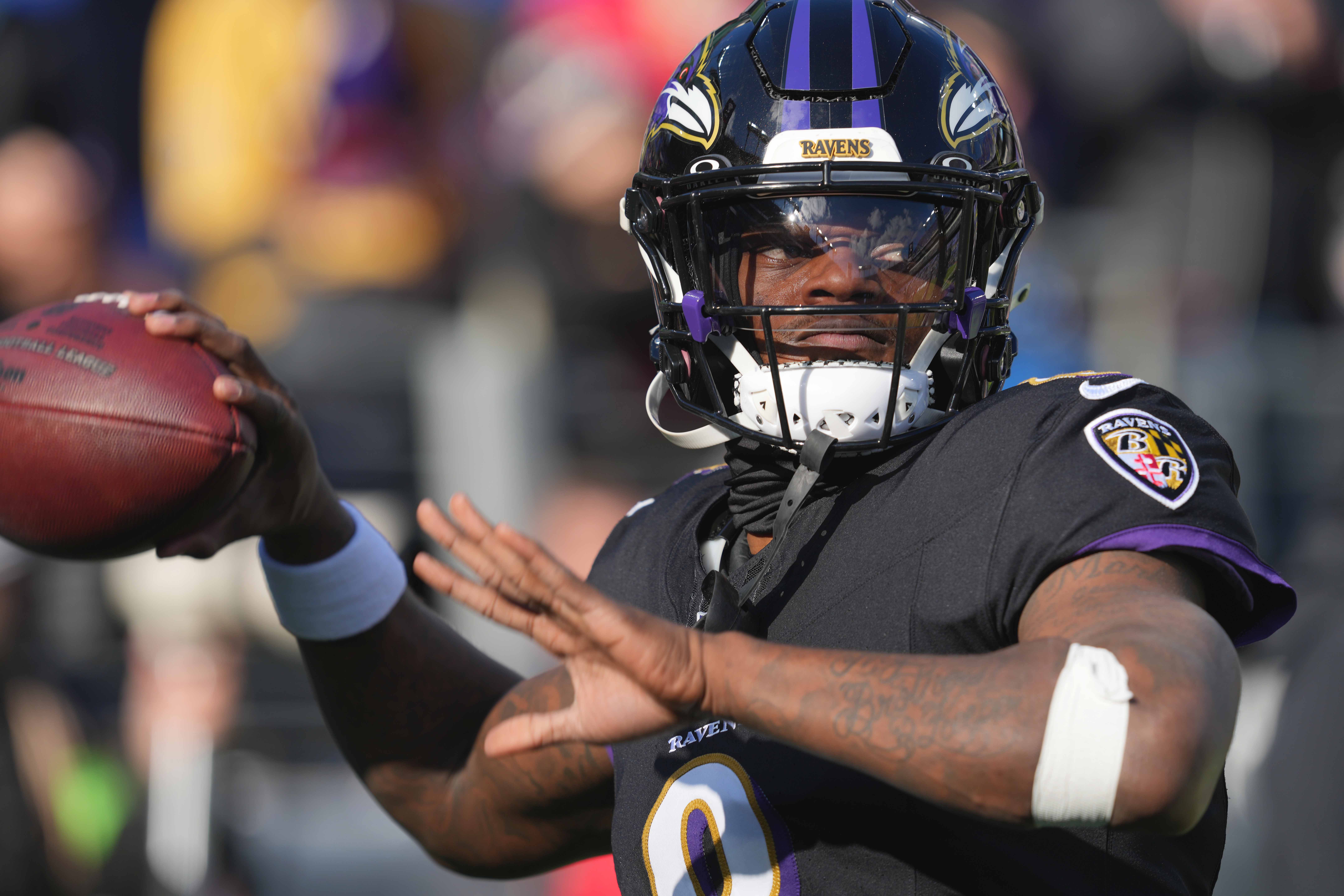Analysis
4/16/23
6 min read
Lost Paradox: Importance of TDs for Fantasy Football Tight Ends

The stage was set for the importance of touchdowns to fantasy production in the introductory piece to this series. This installment will take a theoretical, statistical and analytical approach to the areas of predictability and variance associated with touchdowns at tight end.
This will be formatted to make the conclusions as actionable as possible. First is a look at team tendencies and expectations moving forward for major statistical outliers at tight end before scrutinizing the data from the previous three seasons.
All data discussed is pulled directly from Sports Info Solutions.
Other Parts: Quarterbacks | Running Backs | Wide Receivers
Importance of TE Touchdowns
Outliers, 2023 Outlook
 New England Patriots
New England Patriots
The New England Patriots historically have utilized heavy rates of 12-personnel alignments in the red zone, dating to Josh McDaniels' tenure as offensive coordinator. They made two free agent splashes at the position in 2021, luring Hunter Henry from the Los Angeles Chargers and Jonnu Smith from the Tennessee Titans, only to have their tight ends run the second-fewest red zone routes in the 2022 season. This, predictably, led to only two total tight end touchdowns, both on Henry receptions from outside the red zone.
The franchise brought back former offensive coordinator Bill O’Brien for the same position. O’Brien coached the Houston Texans from 2014 to 2020, during which time Texans tight ends ran the seventh-fewest red zone routes (265) and managed just 32 total touchdowns (4.6 per season).
Consider me out on Henry and newcomer (and athletic freak) Mike Gesicki for the 2023 season.
 Washington Commanders
Washington Commanders
The Kansas City Chiefs lapped the field in red zone routes at tight end during the tenure of offensive coordinator Eric Bieniemy, who moved to the same position for the Washington Commanders. Tight end Logan Thomas broke out during the 2020 season, collecting 72 receptions and six touchdowns on a solid 110 targets.
Injuries have derailed Thomas' production over the past two seasons, but he suddenly has a coordinator who loves to create mismatches in the red zone through various alignments and misdirection. That should increase Thomas' red zone involvement for 2023. He also will be a full season removed from a torn ACL suffered in December 2021. He played in 14 games (13 starts) in 2022.
Thomas currently is going undrafted in most early best ball contests, behind teammate John Bates.
 Cleveland Browns
Cleveland Browns
Offensive coordinator Alex Van Pelt has been with the franchise since the 2020 season, during which time Cleveland Browns tight ends rank third in red zone routes run (as shown in the final chart in this piece). David Njoku and the rest of the Cleveland tight ends underperformed their touchdown expectation by four in the 2022 season, something that could regress to expectation in Deshaun Watson’s second season with the club.
Njoku currently is being drafted as the TE10 in early best ball drafts after finishing the 2022 season as the TE8 in fantasy points per game.
 Philadelphia Eagles
Philadelphia Eagles
Philadelphian Eagles tight ends ran the seventh fewest red zone routes a season ago, and with the team promoting Brian Johnson to offensive coordinator, it's fair to assume that will not change dramatically moving forward. So, while Dallas Goedert is one of the most complete tight ends in today’s game, it's unlikely he will dramatically increase his career-long touchdown expectancy of three to five scores.
Goedert is currently being drafted as the TE5 in early best ball drafts. It hurts to say it, but consider me out at that price, given the importance of the early rounds in the format.
Team Tendencies
The data in the section below proves red zone routes run is the single greatest predictive correlation to tight end scoring in today’s NFL. It’s quite simple – big-bodied tight ends in the tight spaces that are created in the red zone generate touchdowns, but they must be in a route (generally) to do so.
The problem is NFL teams today typically run heavy sets from the red zone (21-personnel — two running backs and one tight end; and 12-personnel — one running back and two tight ends) at increased rates. This means red zone routes run numbers have been in a steady decline for tight ends during the previous decade, placing additional emphasis on teams that utilize their tight ends in routes in the red zone (Kansas City), at least as far as fantasy purposes are concerned.
The premier case study for this assertion is Robert Tonyan and the Green Bay Packers over the previous three seasons. In 2020, Packers tight ends ran the fifth most red zone routes in the league (75), leading to a career-high 11-touchdown outburst from Tonyan. In the following two seasons, Packers tight ends ran just 105 combined red zone routes, leading to only four combined red zone touchdowns from the position (Tonyan, who sustained a torn ACL midway through the 2021 season, has 17 career touchdowns over five seasons, 11 of which came in that magical 2020 season).
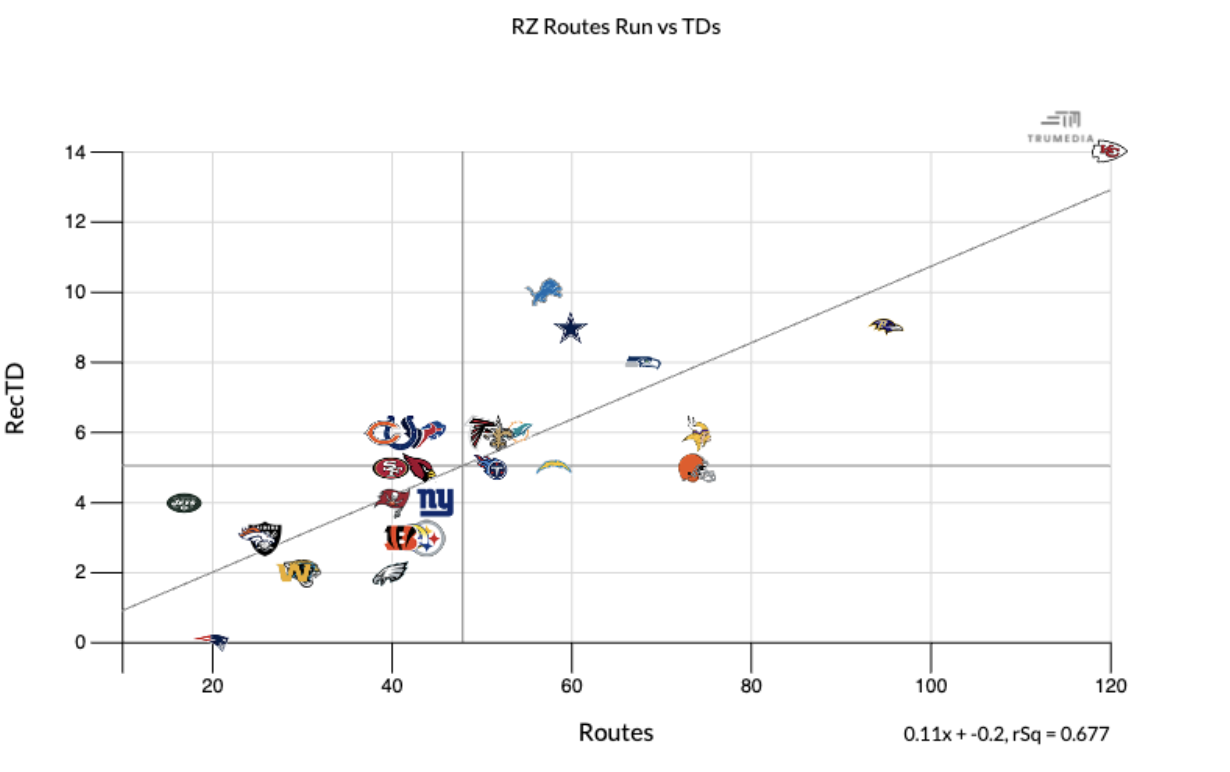
The above chart compares red zone routes run and tight end receiving touchdowns for the 2022 season. I charted all potential predictive correlations to tight end scoring, and the r-squared value for this comparison returned the highest correlation. That correlation also increases as the sample size for the data utilized increases, as we’ll uncover in the section below.
It's not surprising the top three tight ends in current ADP in early best ball drafts are on the teams with the highest number of red zone routes at the position. While we’re here, one last shoutout for Njoku and the Browns.
The Data

Almost 20 percent of the fantasy points to come from tight ends during the previous three years in a PPR format came through touchdowns. That rate rises to almost 24 percent in half-PPR, highlighting the importance of touchdowns to the position. Those rates are comparable to what we uncovered at running back and much higher than at wide receiver.

Examining the situational touchdown rates at the position, red zone opportunities reign supreme. Almost 84 percent of all touchdowns scored at tight end over the previous three seasons resulted from red zone opportunities.
Furthermore, the rate of green zone touchdowns was much lower than the rate of running back scoring from the green zone, meaning tight ends have a lower reliance on a team’s red zone first down rate (remember, that was highly important to the predictability of running back scoring).
The NFL average for tight end red zone routes over the previous three seasons was just 51.5 per season, a number that dropped to 47.9 in 2022. That helps us visualize the decreased reliance on tight ends in routes in today’s NFL game, which, in turn, places increased reliance on the major statistical outliers at the position.
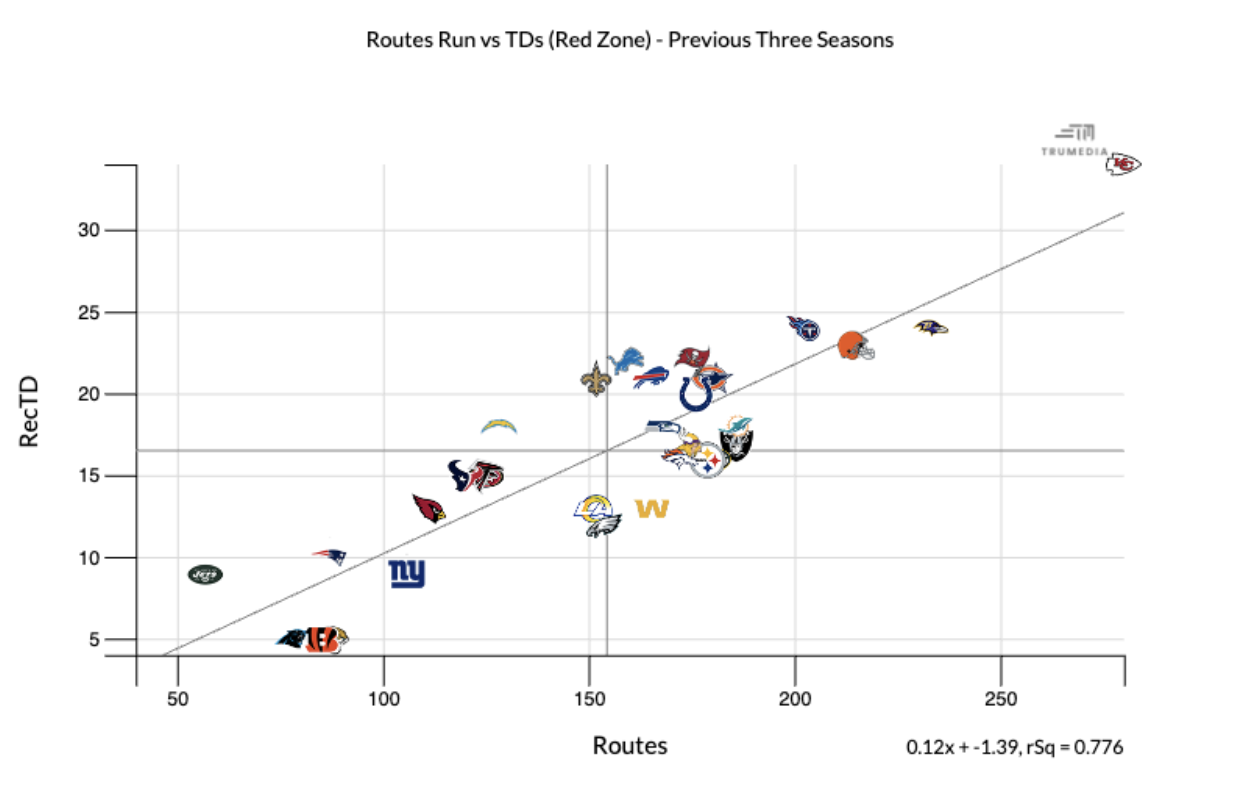
The above chart is a visual representation of the correlation between red zone routes run and red zone receiving touchdowns at the tight end position. Remember, almost 84 percent of all touchdowns at the tight end position over the previous three seasons came from the red zone.



